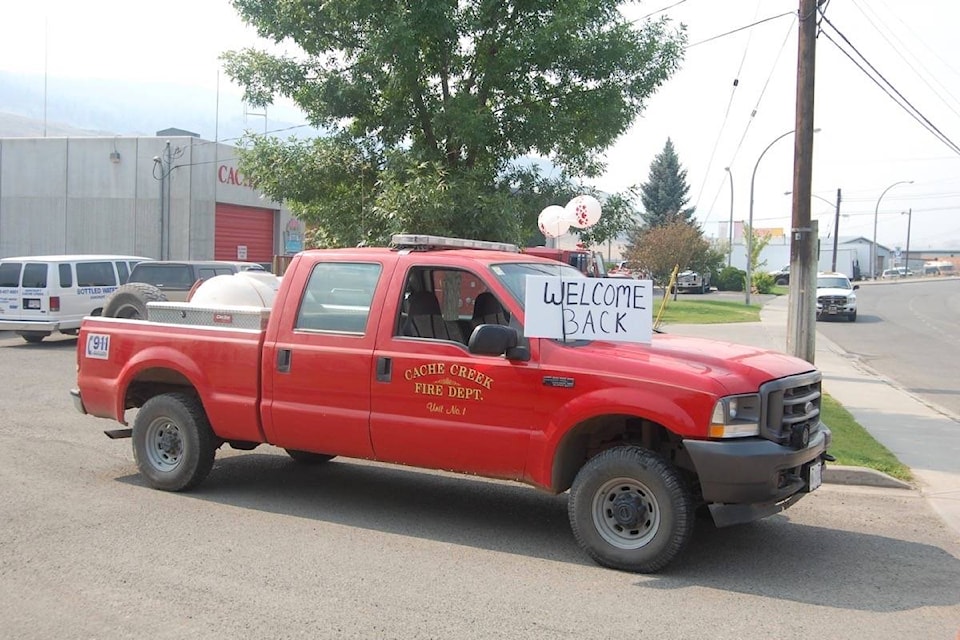The B.C. government has released its updated action plan in response to the government-commissioned, independent report by Chief Maureen Chapman and George Abbott, “Addressing the New Normal: 21st Century Disaster Management in British Columbia”, about the unprecedented 2017 wildfire and flood seasons in British Columbia.
The initial action plan was released in October 2018, with a commitment to provide updates over six-month intervals until October 2020. In addition to wildfire and flood mitigation initiatives, an enhanced provincial response capacity, more communication, and a closer collaboration with First Nations (including emergency management practices that make effective, and respectful, use of Indigenous traditional knowledge), the province is taking several steps following the recommendations in the Abbott/Chapman report.
Emergency Support Services (ESS; formerly Emergency Social Services), which provides support to those who have been evacuated from their homes during emergency events, was put under enormous stress during the 2017 and 2018 seasons.
Feedback indicates that the process for the delivery of ESS needs to be modernized, streamlined, and delivered in a way that considers the ways that evacuations impact different populations and groups differently.
To address these challenges, an ambitious project to streamline and modernize the ESS system has been initiated. Objectives are to provide access to digital services for evacuees; decrease the time it takes to receive services; and ensure the protection of personal data. These enhancements will be piloted in four communities during the 2019 wildfire season (Kamloops, Tk’emlups te Secwepemc, Regional District of Central Okanagan, and Prince George), and can also be deployed and made available for any community not involved in the pilot project that is unexpectedly asked to host large numbers of evacuees.
Challenges associated with how evacuation orders are imposed, lifted, and administered (e.g. roadblocks) were a significant issue for First Nations, local authorities, and the public during 2017 and 2018 events. Issues include integrating communications with the public, and among governments and agencies; recognizing the authority held by First Nations over their lands and emergency management for their communities (including decisions regarding evacuations); improving how roadblocks are administered when an evacuation order is in place; and clarifying appropriate processes if a community or individual decides not to evacuate, once a recommendation to evacuate has been provided by an emergency management agency.
Provincial agencies have started preparing for the 2019 wildfire season in order to address issues related to evacuation orders. The focus is on clarifying roles and responsibilities, decision making processes, and communication strategies, and revised Evacuation Operational Guidelines are expected to provide greater clarity, and more effective processes, regarding how evacuation orders are imposed, lifted, and administered (including the operation of roadblocks).
First Nations and local authorities want to maximize opportunities to participate in wildfire response, both from a contracting and employment perspective, and to assist in the protection of their communities and local environment. These local resources provide invaluable assets to assist with provincial firefighting efforts, and the BC Wildfire Service is increasing response capacity by making additional use of local resources.
The need for community recovery efforts was one of the most significant lessons of the 2017 and 2018 floods and wildfires. Community recovery requires focused support, and the delivery of recovery programming needs to be integrated across agencies.
A disaster recovery framework is being developed, which will include coordinating recovery activities across the provincial government in support of communities; clarifying roles and responsibilities of provincial ministries, First Nations, local authorities, non-government organizations, Crown corporations, federal government, and other recovery partners; providing accountability and leadership across the various sectors of community recovery; providing guidance on funding programs and financial management at the provincial and federal levels; ensuring administrative fairness in the allocation of post-incident recovery resources; and promoting disaster risk reduction principles to minimize future damage to the community and the environment.
Using traditional First Nations knowledge was identified as important, and a Provincial initiative is currently under development which will—with First Nations guidance—develop policies and procedures regarding use of traditional knowledge in emergency management. Engagement with First Nations partners to date has stressed the importance of such factors as ensuring adequate protection of sensitive traditional knowledge (e.g. the location of culturally significant sites).
The next update will be issued Oct. 31, 2019. To read the action plan, progress update, and the Abbott/Chapman report, visit http://bit.ly/2J0RmjJ.
editorial@accjournal.ca
Like us on Facebook and follow us on Twitter
